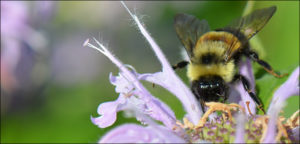
Woodland Dunes was founded in the 1970’s by a handful of people who recognized that the Lakeshore is a special place for nature, something that has been known since Native Americans were the only people who lived here. There are three preserves under the care of the organization, which strives to preserve biological diversity as much as possible for the benefit of both wildlife and people in our community. We would like to see everything prosper – birds and people, wildflowers and businesses – we believe there is room for all.
Even though our preserves have been surveyed and studied for decades, every once in a while we find something we haven’t seen before. Often, those things underscore the importance of our place in the world. A few years ago we began bat surveys, which showed that at a time when disease threatens to decimate their populations, almost all the species of bats of Wisconsin are found here in summer, including the endangered northern long-eared bat. Many birds are declining, but there are still about 100 species which call our preserves home during the nesting season.
Lately we have become aware of the importance of pollinating insects (certain flies, butterflies, and bees) and how their populations have suffered in the last few years. Although there is a lot of attention paid to non-native honeybees we brought from Europe, their struggles probably only mirror what is happening to our native insects, which have pollinated plants here for tens of thousands of years. Because of limitations on methods of surveying native pollinators (not all are as flashy and visible as butterflies), a lot is yet to be discovered. One native bee; however, was listed as endangered last year, the first native bee in North America to receive that unfortunate distinction – Bombus affinis, the rusty patched bumblebee. This insect was common years ago, but is mysteriously disappearing from many places in which it used to live.
Last summer we were visited by a colleague from the Wisconsin DNR who was surveying invasive plant species in preparation to help manage them in our preserve. Although we are not a State agency, we voluntarily participate in the State Natural Areas program and are grateful for assistance we sometimes receive from the DNR. While in our preserve, this biologist discovered a rusty patched bumblebee in one of the prairie patches we have established within our main preserve. This discovery reinforces what we have always known- that our preserves, and other natural areas along the Lake, are or can be exceptional wildlife areas if we take care of them. This tiny insect which forages in the wildflower meadows is particularly special and would probably not survive here if we did not manage the preserves the way we do.
When you visit Woodland Dunes, you’ll see that in addition to the exceptional forested wetlands there are hundreds of acres of land which are being planted with wildflowers and grasses which contribute their own special wildlife benefit. You may not notice a rusty patched bumblebee, as they are neither particularly noticeable and certainly not aggressive. But just knowing that they can still survive here can give one a feeling of hope that if living things are given a chance they can persist. And that, more than anything else, is why Woodland Dunes exists.
photo- Rusty patched bumblebee by Kim Mitchell, US Fish and Wildlife Service
